Matador Network's Blog, page 638
June 9, 2021
The Caribbean island of St. Barts now welcomes vaccinated US travelers
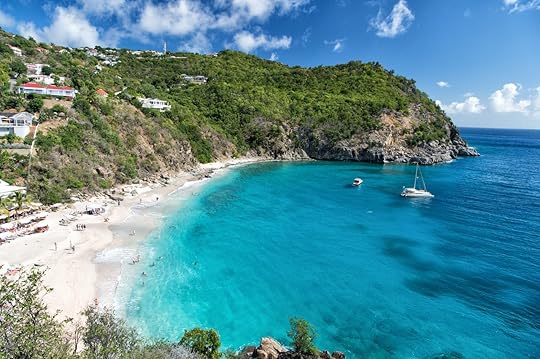
As of today, the French-speaking Caribbean island of St. Barthélemy — commonly known as St. Barts — is opening up for vaccinated US travelers.
“After two successful vaccination campaigns, the vast majority of our island’s citizens are now vaccinated, and our efficient COVID-19 testing centers still offer swift service for everyone,” Nils Dufau, president of the St. Barts Tourism Board, said. “Restaurants, boutiques, nautical activities as well as all services are being provided as usual. Hotels and villas are open.”
Upon arrival in St. Barts — and when booking and checking into their accommodations — US travelers must have proof of vaccination. They also need to show the negative results of a COVID-19 PCR test taken three days before arriving on the island. A negative antigen test taken within 48 hours of arrival will also be accepted.
Travelers to St. Barts must have received one of the vaccines that the European Medical Agency has approved, i.e. Pfizer, Moderna, AstraZeneca, and Johnson & Johnson.
Those under 18 will not have to show proof of vaccination, and children 10 and under will not be subjected to testing. 
The post The Caribbean island of St. Barts now welcomes vaccinated US travelers appeared first on Matador Network.

Beginner's guide to Molokai
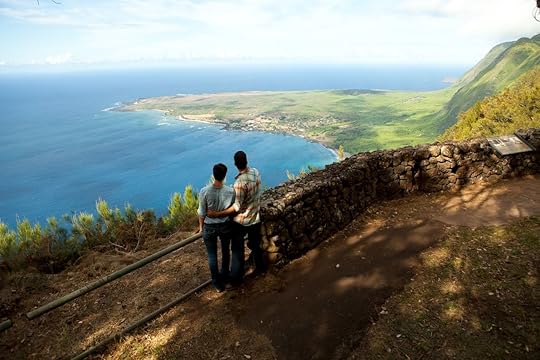 We all have different feelings about traveling right now. When you’re ready, we hope you feel safe, inspired, and excited to join us on the Island of Molokai. Read more about current safety protocols.
We all have different feelings about traveling right now. When you’re ready, we hope you feel safe, inspired, and excited to join us on the Island of Molokai. Read more about current safety protocols.Molokai may be the “Friendly Isle,” but don’t let that name fool you into imagining resort-side luaus and collared hospitality. The island is a quiet place that reflects a more traditional Hawaii.
Here, sea cliffs rise higher than you’ve ever seen. Verdant valleys and massive sand dunes punctuate the coast, and the most “populous” town has under 4,000 residents. Molokai lacks the spectacle that so often comes with island getaways — no top-dollar resorts, no packaged experiences — and instead focuses on serenity. On simplicity. Once you have the chance to experience it, you’ll quickly feel just like the locals do: “Molokai (is) Mo Bettah.”
General travel tips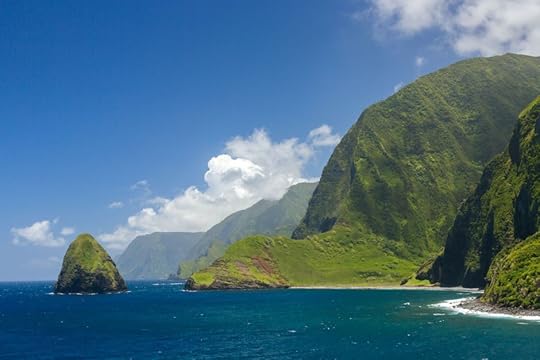
Photo: Shutterstock/Kridsada Kamsombat
From the moment you touch down at the airport (flying from Maui or Oahu), you’ll realize Molokai isn’t your average Hawaiian vacation island. For starters, the airport is tiny, just like the island itself (38 miles long by 10 miles wide). The fastest speed limit is 45mph. People wave. Everything is slower and simpler here.
Unless you’re planning on a cycling vacation — which, by the way, would be an excellent idea — you’ll need a car. Alamo is the only national rental agency at the airport; there are a couple of small, local rental companies, like Molokai Car Rental, that offer a more affordable alternative. However you choose to do it, getting around is pretty simple — the island’s main drag has markers at every mile, often used to denote a site’s location.
The 57-room Hotel Molokai, a few minutes from the main town of Kaunakakai, steals the accommodation spotlight with its lively activity desk, restaurant, pool, and oceanfront views. Other lodging options include a variety of vacation rentals, condos, and cottages.
Note: If you’re into cycling and sustainability — two very popular things on Molokai — check out Molokai Bicycle. Philip will hook you up with everything you need and everything you need to know to get around. It’s a great way to travel with respect for the island and its communities.
Molokai by land
Photo: Tor Johnson/Hawaii Tourism Authority
Molokai was formed by two volcanoes: Wailau (East Molokai Volcano) and Mauna Loa (West Molokai Volcano). The island used to be much bigger, but over a million years ago, a third of it collapsed into the Pacific. Remnants of that catastrophic event, dramatic sea cliffs rise more than 3,300 feet above the ocean waves around the scenic Kalaupapa Peninsula. They’re among the tallest in the world.
You can view the cliffs at Kalaupapa National Historical Park, a hauntingly beautiful landscape with a somber past. In 1866, it became a place of banishment for those suffering from Hansen’s disease, aka leprosy, and thousands died here in isolation, the crashing waves and jagged cliffs more a prison than a paradise. To visit, guests must be sponsored by a resident or go with a tour group. Currently, the park is fully closed due to Covid-19 — check the NPS website for updates.
If you’re set on seeing the cliffs but can’t get hold of a permit, head to Palaau State Park. In addition to hiking trails that lead deep into ironwood forest, there’s a stunning overlook of Kalaupapa (from about 1,000 feet above the peninsula). Note: You can book a helicopter tour from Maui to view the cliffs as well.
Kalaupapa may be the big attraction here, but know that other areas of the island are just as remarkable. Molokai’s northwest coast is protected as the Moomomi Preserve, one of the last intact coastal sand dune ecosystems on the islands. There are two miles of wave-carved dunes, acres of rare native flora, and plenty of wildlife — including sea turtles.
Another major draw for adventurers looking to connect with Hawaii’s history is the Halawa Valley, where you can trek through private property to the double-tiered 250-foot Mooula Falls. The born-and-raised guides from Halawa Valley Falls Cultural Hike will help you navigate the dense rainforest to the waterfall pond for a swim.
Molokai by sea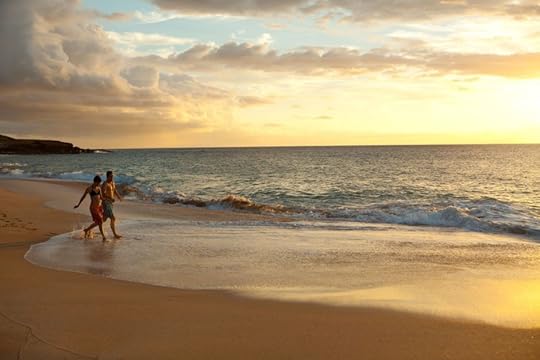
Photo: Dana Edmunds/Hawaii Tourism Authority
Molokai is surrounded by stunning reefs (be sure to get a window seat on the plane!), particularly on the south coast. These fringing reefs, Hawaii’s longest, stretch continuously for 28 miles. There isn’t a lot of deep water near the beaches for swimming, so hopping on a boat — be it a kayak or a fishing charter — should be front and center on your ocean itinerary. Deep-sea fishing is one of the most popular activities on Molokai, as is whale watching (in season, December through May) and snorkeling, all of which are best done on a guided tour.
For any or all of these activities, hit up Molokai Fish and Dive. On their snorkeling and scuba diving trips, a small team — three captains and four divemasters — will take you out to reef walls and deep blue holes. Whale-watching tours, meanwhile, will focus on the the Kaiwi and Kalohi channels, where humpbacks tend to congregate in the “chillier” months.
All this begs the question: This is Hawaii after all, so what about the beaches? While Molokai is more about community and sustainability than sunbathing, there is one you’ll want to explore: Papohaku Beach. It’s three miles long and rarely crowded. The breaks can be quite large, especially in winter — leave the surfing to the pros and, instead, just lie back and soak in your serene surroundings.
Sightseeing and shopping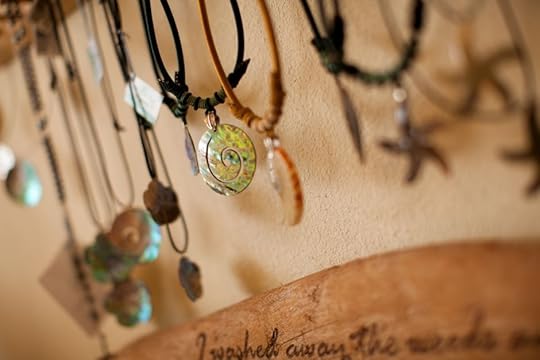
Photo: Dana Edmunds/Hawaii Tourism Authority
If you’ve waited all of your life to paint and mail a coconut as a postcard, now’s your chance — stop in at the Hoolehua Post Office to Post-a-Nut. Afterward, check out the Molokai Museum & Cultural Center to learn about the island’s history, particularly that of the people who lived and continue to live in Kalaupapa. This is a perfect place to talk story with locals and really dig deep.
Another good time to talk story is while shopping. Perhaps it comes as a surprise, but the shopping on this small island is pretty exceptional. Big Wind Kite Factory in the almost-ghost town of Maunaloa is a fun excursion, while Blue Monkey is a great place to stock up on souvenirs (and maybe pick up a ukulele?). Back in Kaunakakai, stroll along and around Ala Malama Avenue to find an array of local shops, clothing boutiques, and restaurants.
Dining and drinking
Photo: Blake Bronstad/Hawaii Tourism Authority
Leave your sport coat at home, because dining on Molokai is the definition of laid back. Hiro’s Ohana Grill at Hotel Molokai is about as upscale as it gets, and you’ll definitely want to eat at least one meal here, what with the stunning ocean views, evening entertainment, and daily fresh catch.
Paddlers Restaurant and Bar also offers a more elevated menu, with a large selection of pupus (appetizers) that go great with a beer and the night’s live music. For more casual meals — including Hawaiian favorites like the loco moco, plate lunch, or teriyaki burger — visitors and residents alike love Kualapuu Cookhouse, Manae Goods & Grindz, Molokai Burger, and the vegan-friendly Hula Bean Cafe.
Whatever you do, make sure to stop into Kanemitsu Bakery & Coffee Shop for breakfast — it’s the only restaurant on the island that’s been nominated for a James Beard Award. Pay another visit around 7:30pm (this time you’re looking for the back door, down the alley) for their famous Molokai Sweet Bread, full of sweet, creamy stuffing choices, straight from the oven to your mouth. Yep, the simple pleasures are Molokai’s specialty. 
The post Beginner’s guide to visiting the Hawaiian island of Molokai appeared first on Matador Network.

June 8, 2021
NYC will host a massive ‘Homecoming Week’ in August with a 60,000-person concert
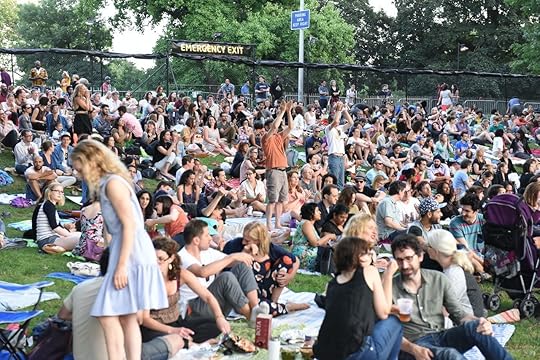
New York Governor Andrew Cuomo recently announced that once the state reaches a 70 percent one-dose vaccination rate for all adults in the state, most COVID-19 restrictions will be lifted. (The current rate is 56 percent at the time of writing.) New York City Mayor Bill de Blasio is taking his word for it and planning a massive homecoming event in August, including a concert that will host 60,000 people on The Great Lawn in Central Park.
“It’s going to be a moment to celebrate the rebirth of New York City in August in Central Park on the Great Lawn,” de Blasio said in a news conference. “We’re asking New Yorkers during the Homecoming Week, come out, get involved in the community, support your community. But it’s not the only thing we’re doing. There’s going to be music and activities all over the five boroughs. It’s going to be literally a once-in-a-lifetime event. But what makes it special is, it is one of the great moments of New York City, back on our feet, strong for our future. And every New Yorker should be a part of it.”
New Yorkers can expect events to take place in all five boroughs throughout the week. The concert will host multiple unnamed acts at this time with producer and artist Clive Davis scouting for talent, de Blasio said in an interview.
Although many of the details have not been officially announced, The New York Times reports that the tentative date is August 21, 2021, and the majority of the tickets will be free. Non-vaccinated participants will be separated from vaccinated concert-goers, with 70 percent of the tickets going to vaccinated persons. 
The post NYC will host a massive ‘Homecoming Week’ in August with a 60,000-person concert appeared first on Matador Network.

11 Phoenix Airbnbs with luxury pools, putting greens, and artsy vibes
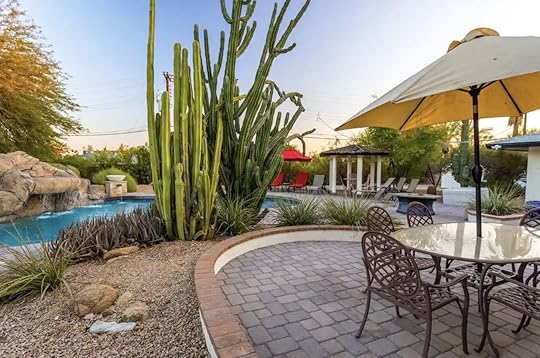
We hope you love the spaces and stays we recommend! Just so you know, Matador may collect a small commission from the links on this page if you decide to book a stay. Listed prices are accurate as of the time of publication.
As locals are quick to note, Phoenix is very spread out. Being in the middle of a mountainous desert allows people to participate in outdoor activities all year round, whether that be hiking, visiting a local market, or taking a swim in a pool. Having a car is not essential, but it makes moving around the city and surrounding area a lot easier, especially during the scorching summers. These eleven Phoenix Airbnbs put you close to everything that is happening.
1. Chic condo with pool and hot tub near Old Town Scottsdale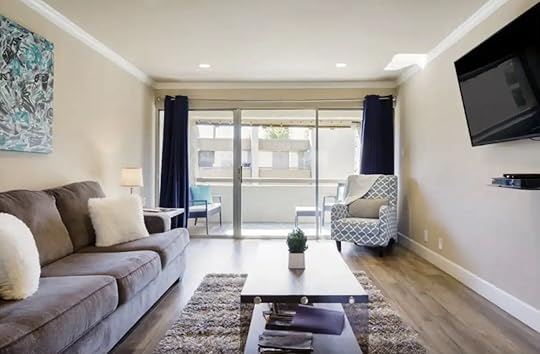
Photo: Airbnb
Located in the entertainment district of Scottsdale, this cozy condo puts you minutes away from anything one could need. Old Town Scottsdale is one of the thriving areas of Phoenix, loaded with locally owned shops and restaurants, catering to the college crowd, young professionals, and visitors in the city for sports or business. Scottsdale is all about what happens when the sun goes down, and there are many nightclubs within walking distance of this condo. If you’re interested in shopping, just past Old Town is the Scottsdale Fashion Square which has a huge range of shops that range from Build-a-Bear to Gucci. And if you are just looking for a relaxing afternoon, the Art District is home to more than 20 galleries and exhibits and is a short stroll away from this rental.
Four guests, one bedroom
Price: $145 per night
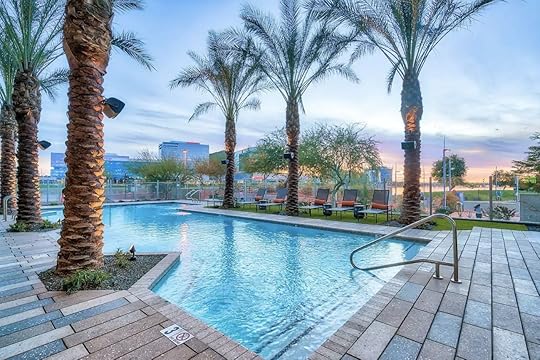
Photo: Airbnb
With a view of Tempe Town Lake, this one-bedroom apartment puts you adjacent to many outdoor activities such as kayaking, paddleboarding, and pedal boating. Tempe Town Lake — home to the swimming section of the local Ironman competition — also has a lovely path that makes for a pleasant stroll. If hiking is more your thing, you’re in luck as A Mountain is right across the lake, and the trail takes only an hour to complete. Tempe is home to Arizona State University, and Mill Avenue is a statement street full of bars, clubs, and restaurants. However, it’s not all parties and nightlife here; the Phoenix Zoo is a mere two miles away, the top family attraction in the area that doesn’t involve sporting events.
Two guests, one bedroom
Price: $122 per night
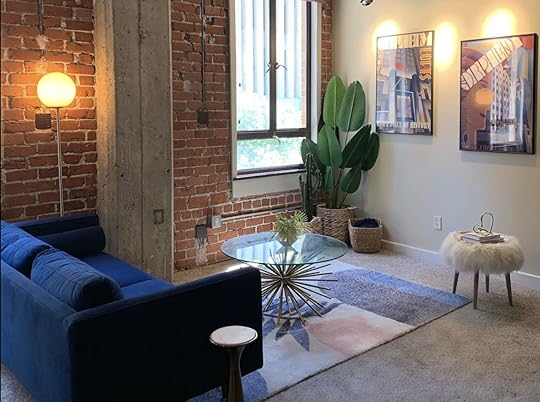
Photo: Airbnb
This condo costs less than half the price of similar downtown Phoenix Airbnbs, making it perfect for remote workers who wish to stay longer than a weekend. Located right in the center of downtown, it is very accessible via the light rail. Everything from nightlife to sports and concert venues to professional offices, along with the cafes, restaurants, is within walking distance from here. Having the light rail mere steps away also allows for extremely easy transportation to and from Phoenix Sky Harbor Airport.
Four guests, one bedroom
Price: $90 per night
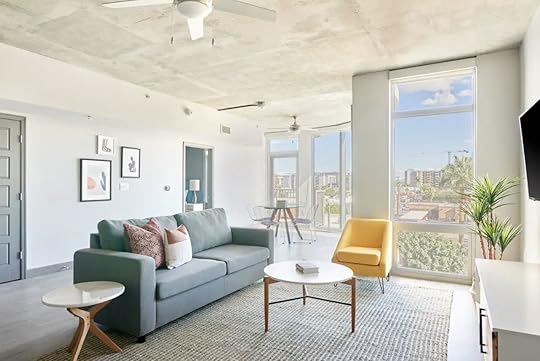
Photo: Airbnb
This Midtown apartment at Sonder is ideal for a family getaway. The apartment sleeps four and comes with access to a lounge area, a state-of-the-art fitness center, and a rooftop pool with a view of the Phoenix skyline. It sits right outside of downtown Phoenix with a five to ten-minute walk to the heart of the city center. Downtown Phoenix plays host to a number of concerts, as well as the Phoenix Suns (NBA) and Arizona Diamondbacks (MLB), so there is almost always an event to go to. In addition, Midtown is known for its restaurants and bars, many of which are right outside the door. The Phoenix Valley Metro light rail is only four blocks away, and if you happen to be there for the first Friday of each month, a street fair takes place in the surrounding neighborhood.
Four guests, one bedroom
Price: $138 per night
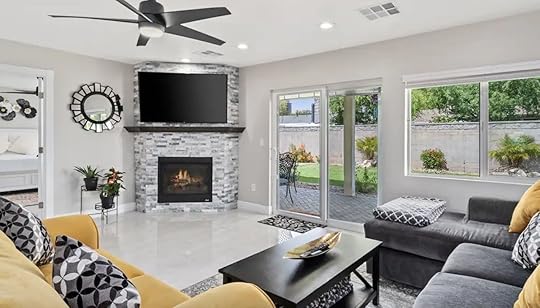
Photo: Airbnb
If a group house is what you are looking for, look no further than this three-bedroom, five-bath home located in the Biltmore area near the nationally renowned Arizona Biltmore Hotel. This house comes fully fitted with a pool table and three TVs. Both the front and backyard have a fire pit and a vast seating area to enjoy the beautiful Phoenix sunsets and cool(er) nights. From here, it is a short drive to both Camelback Mountain and Piestewa Peak, which have plenty of hiking trails that lead to incredible views of the entire city. Being so close to the Biltmore Hotel, there are various restaurants ranging from the quick classic of In-N-Out Burger to the more elite Hillstone Steakhouse.
Seven guests, three bedrooms
Price: $300 per night
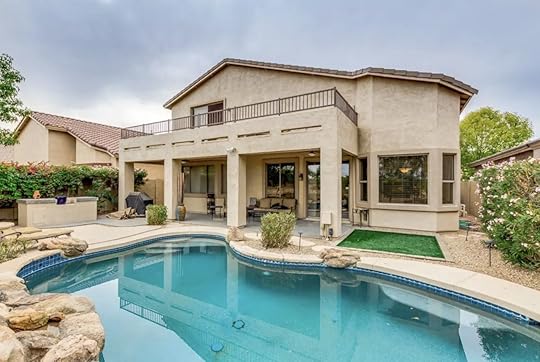
Photo: Airbnb
This is the best Phoenix Airbnb for golfers. This picturesque house has mountainous views and is minutes away from The Legacy, one of the city’s top public golf courses. The golfing does not stop there either. If your short game needs some work, you’re in luck as the home has its own putting green. South Mountain Park and Preserve is also a short drive away and offers several stunning hiking trails.
Six guests, three bedrooms
Price: $350 per night
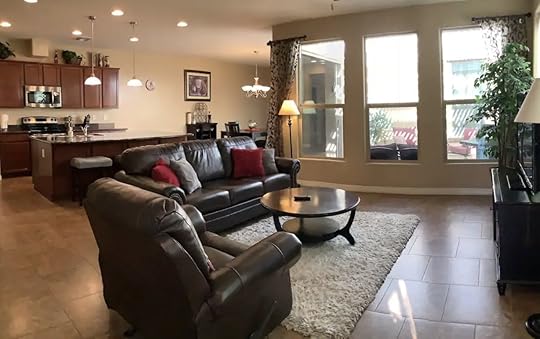
Photo: Airbnb
This spacious house is located just blocks away from the Glendale Sports and Entertainment District. The area is home to loads of restaurants and different themed bars, including an arcade bar, an ax-throwing bar, and a comedy club. Also in the district are two stadiums that host the Arizona Cardinals (NFL), the Arizona Coyotes (NHL), and some concerts and other major events. Just a short drive away, there is the Desert Diamond Casino, Top Golf, and the Camelback Ranch, the Spring Training home of the Los Angeles Dodgers and Chicago White Sox.
Six guests, two bedrooms
Price: $130 per night
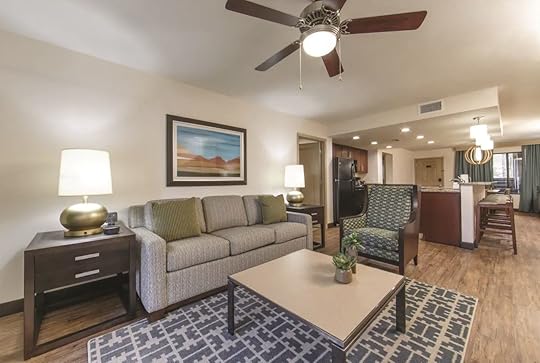
Photo: Airbnb
Every year, for one week in February, all eyes are on Scottsdale as what’s been dubbed the “greatest show on grass” takes place at the Waste Management Open. This annual golf tournament happens right up the street from this two-bedroom Phoenix Airbnb at the TPC Scottsdale Champions Course, and nowhere is closer to the action. This villa is just a short walk away from the famous 16th hole, where the party really kicks off. In addition, this villa comes with access to different pools, the golf course, and a gym. Only a short drive away is Old Town Scottsdale, as well as the OdySea Aquarium and McDowell Mountain Regional Park.
Five guests, two bedrooms
Price: $281 per night
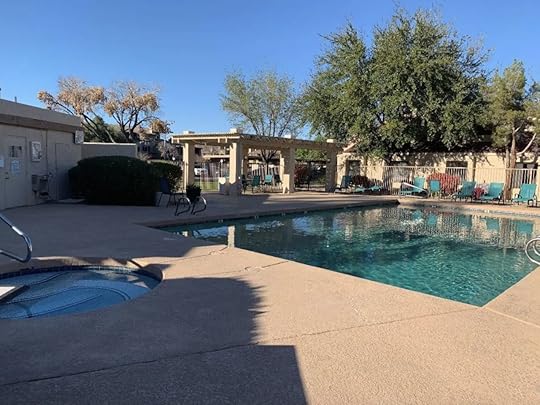
Photo: Airbnb
This townhouse puts you within a quick Uber ride to anywhere in the city by being relatively close to two of the bigger highways. Walking distance from the townhouse is Sloan Park, the Spring Training home of the Chicago Cubs, which is in a newly renovated public park that sits along the Salt River. The Mesa Riverview, an open-air shopping mall with plenty of food and drink options, is also a short walk away. Like many places in Phoenix, this one also comes with access to a pool to cool off during the hot desert days.
Six guests, three bedrooms
Price: $208 per night

Photo: Airbnb
This mural-laden home is one of the most colorful around and fits right in with the vibrant colors of downtown Phoenix’s Art District. The house comes with a hand-painted mural that adorns two walls while another wall is covered floor to ceiling in orange fur. In addition, dozens of street murals are scattered around the neighborhood, including one in a lively open-air food court called The Churchill. This place is constantly busy as it has bars and restaurants and hosts live music. Every Saturday, there is the local Downtown Phoenix Farmers Market which is a few blocks away, and just a bit further is a flea market that takes place on Sunday mornings.
Two guests, studio
Price: $125 per night

Photo: Airbnb
A house that holds 10 people and sits directly in the shadow of Camelback Mountain is prime property in Phoenix. This large home comes with a pool with a rock feature, a playground, and a basketball court — not to mention large decorative cactuses to welcome you and your crew to the property. The Arcadia neighborhood is one of the more popular and historic in Phoenix, dating back to its roots as a citrus farming town in the early 1900s. In walking distance are hiking trails, restaurants, and shops. Camelback Mountains hikes are good for both beginners and experts alike. 
Ten guests, four bedrooms
Price: $227 per night
The post 11 Phoenix Airbnbs with luxury pools, putting greens, and artsy vibes appeared first on Matador Network.

Statue of Liberty’s French replica is coming to the US for July 4 celebrations
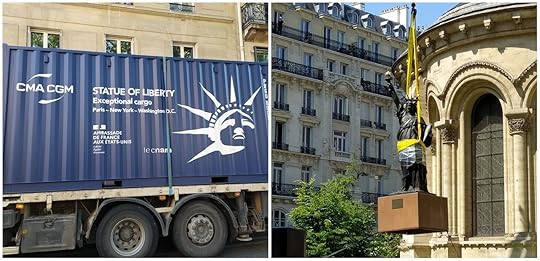
In June 1885, the United States received the 305-foot-tall Statue of Liberty as a gift from France and a symbol of the two nations’ friendship. Now 136 years later, the US is receiving a second Lady Liberty from France, but this one comes in a much smaller package, as it will be less than 10 feet tall.
The Statue of Liberty’s little sister, a small replica based on the original cast of New York’s famous statue, is usually on display at the Musée des Arts et Métiers in Paris but for the next 10 years, it will be in the US.
The replica is currently en route, and the package will arrive after nine days of sea travel from France to Baltimore, MD, and finally, to Ellis Island in New York. It will be displayed on Ellis Island for July 4 celebrations.

Photo: Musée des Arts et Métiers
Following Independence Day, the statue will travel to Washington, DC, for Bastille Day on July 14. It will be on display in the French Embassy gardens for the next decade, according to the Associated Press.
The Statue of Liberty “is like our Eiffel Tower,” said US Embassy representative Liam Wasley at the send-off ceremony, calling it an icon that symbolizes not just liberty but “the richness of our relationship” with France. 
The post Statue of Liberty’s French replica is coming to the US for July 4 celebrations appeared first on Matador Network.

Mega cruise ships return to Venice, drawing protestors and welcome signs
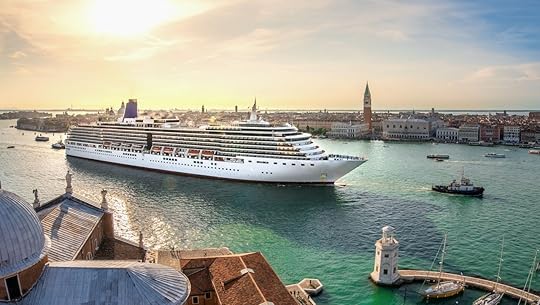
Last week, a 92-ton, 16-story-tall cruise ship sailed into the Venetian Lagoon, passed St. Mark’s Square, and docked by Venice’s historic city center. As it navigated the narrow Giudecca Canal, the megaboat was both cheered with welcome signs and derided by protesters.
To many, the return of cruise ships in Venice has been either a disappointment or a shock. After all, just two months ago Italy’s premier decreed that cruise ships should be kept away from the city’s historic center.
Venice’s lagoon is environmentally fragile, and the cruise industry has been emptying the aquifer below it for decades — one reason the city is sinking. Combined with rising sea levels, Venice experiences worsening floods each year.
Every summer day, massive ships that dwarf Venice’s architectural treasures deposit thousands of people into its narrow pedestrian streets, making them all but impassable and persuading the city to impose entry fees for day-trippers. Two years ago, the very same ship that sailed into Venice last week injured five tourists as it navigated the city’s busy waterways.
With all this, the desire to ban cruise ships in Venice is understandable.
But to Sebastian Fagarrazzi, co-founder of Venezia Autentica, a local organization dedicated to promoting sustainable tourism, the return of the massive boats was no surprise. As he explains, the Italian government never decreed an immediate end to cruise ships in Venice.
“Unfortunately the reporting was not too accurate worldwide and therefore the big announcement was ‘Venice bans cruise ships,’” says Fagarrazzi. “But the law was pretty clear, which says that the cruise ships can no longer pass in front of Saint Marks if an alternative is given.”
That alternative, explains Fagarrazzi, does not yet exist — so the ships can still enter the most sensitive areas of the lagoon. Moreover, he says the short-term alternative that’s been proposed may be worse.
A solution proposed in 2017 would have cruise ships dock at Porto Marghera, which is on the mainland but still within the Venetian Lagoon. As yet, nothing has been done to prepare that port for disembarking passengers. And because Porto Marghera’s canal is too narrow for big cruisers, Fagarrazzi says the dredging required to widen it threatens the lagoon further.
In any event, these alternatives would simply be stopgaps to the ultimate goal, proposed in 2012, of keeping big cruise ships out of the lagoon altogether.
“If they would have used a long term strategy, and in 2012 they would have started building a port offshore, maybe today we would be there,” says Fagarrazzi. “Maybe today after nine years there would be an alternative, maybe ships could be docking outside, maybe we could have spared the Venetian environment, spared the Venetian Lagoon, spared the pollution that is in and around Venice.”
The reason for the delay, says Fagarrazzi, is that politicians have put off the hard choices.
“The topic is so divisive in Venice because there are 6,000 workers that depend on this industry, so it’s 6,000 families. Maybe it’s 20,000 votes,” says Fagarazzi.
The Associated Press reported that the Venice Works Committee estimates 5,700 local jobs are tied directly or indirectly to the cruise ships.
“After one and a half years of crisis, with the lack of tourism, which is basically the only resource that we have here in Venice,” says Fagarrazzi, adding that some residents are very relieved to see the cruise ships arrive. Taking away some of the only jobs that exist now would be impossible.
In the long run, Fagarrazzi hopes that if politicians don’t make the change, customers will demand it. “Younger generations are more and more sensitive when it comes to sustainability, environmental impact,” says Fagarrazzi. “If these people don’t want to change, either they will alienate future customers or they will pay in the long run for the lack of vision.”
Fagarrazzi, who makes clear he opposes cruise ships in Venice, says he understands the short-term thinking behind it, given residents’ economic plight.
“It’s a lesser evil at the moment. But it’s an unsustainable one,” he says of the cruise ships’ return. “Industry, if it does not change, it cannot last — because it ruins the destination.” 
The post Mega cruise ships return to Venice, drawing protestors and welcome signs appeared first on Matador Network.

A photo tour through South Africa’s incredible Klein Karoo desert
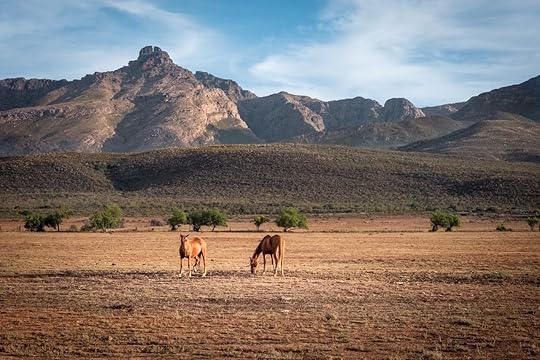
South Africa has no shortage of scenic drives and road trip options to explore — many of which include astounding coastal roads and dozens of mountain passes built by some of the world’s most revered engineers more than 100 years ago.
One of the best of these regions is the country’s semi-arid Klein Karoo. The sparse, isolated area is often overlooked by travelers who are more eager to explore the country’s better-marketed destinations. As beautiful as the deserts of the Klein (which is Afrikaans for small) Karoo are, they’re not without some adversity — which is, for many, the exact reason to explore them.
I experienced this firsthand on a road trip through the region.
After three days of my South African road trip on the rutted gravel backroads of the desert in an ill-suited sedan, the sound of heavy thuds caused by stray rocks on my car’s chassis was something I’d become used to. Still, the noise caused a full-body cringe, a clench of the jaw, and then a sigh of relief as the car continued as if nothing had happened.
When the same thing occurred several hundred kilometers into the third day, on a route with no cell phone signal where I passed just two other vehicles, I prepared for much the same. But this time the car didn’t keep cruising — instead, it stuttered, spluttered, and then cut out altogether. It drifted awkwardly to a halt in the middle of the road. As the dust settled around me, I turned off the music and was enveloped by total desert silence and searing 100-degree heat.
I popped the hood and looked aimlessly into the sweltering engine before I retrieved my cell phone from my car and held it up for a signal. And there, miraculously, were two bars — the first of the day. It was enough to summon some help from a tow truck company that would send help as soon as they could, “but definitely within three hours.”
I had few options but to wait it out as the heat climbed and my water levels went down. So I reclined my seat, made use of an ice brick for personal temperature control, and cracked open a beer that I’d found languishing in the trunk. Instead of feeling anxious or even annoyed, for the most part I reflected on the freedom and joy that comes with a solo, self-sufficient adventure into pretty much the middle of nowhere during a global pandemic.
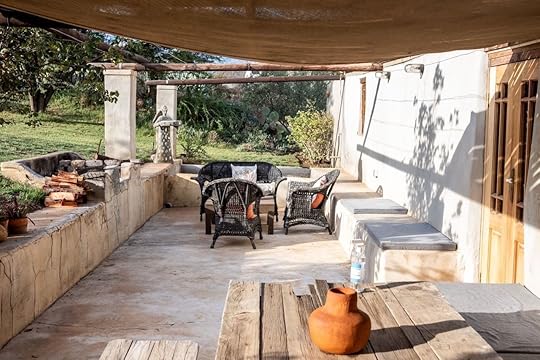
Photo: Andrew Thompson
South Africa’s Klein Karoo is one of the numerous deserts and semi-deserts in the country. It’s located in a 200-mile-long valley a few hours east of Cape Town between the towns of Montagu and Uniondale, and is almost entirely fringed by soaring mountains.
The region has several famous small towns, many of which sprung up in the mid-1800s as wandering European settlers moved out from the Cape looking for fresh lands to exploit. It’s quiet at the best of times, as most tourists opt for Route 62 or the famous Garden Route. Yet several months into the pandemic, many of Klein Karoo’s roads haven’t seen an idle traveler like myself in months.
There are few better places, breakdowns notwithstanding, for a South African road trip at a time like this. It’s a reminder that daily isolation has been a reality long before the pandemic took hold. Here, long, winding, underdriven roads and epic mountain passes connect an intriguing network of small towns that most South Africans haven’t even heard of. These charming towns often have at least one supermarket, and in some cases a few quirky restaurants, along with the odd farmhouse, historical cottage, or converted barn for accommodation.
I spent the first few nights in a converted barn on the outskirts of a town called Ladismith, a farming town established in 1852. Many old farms in the region have turned buildings like these into overnight accommodations to tap into the growing tourism market. The back porch served as the perfect location to light a fire, relax with a book, and watch the sky darken — and then burst to life with stars — all in near-absolute silence.
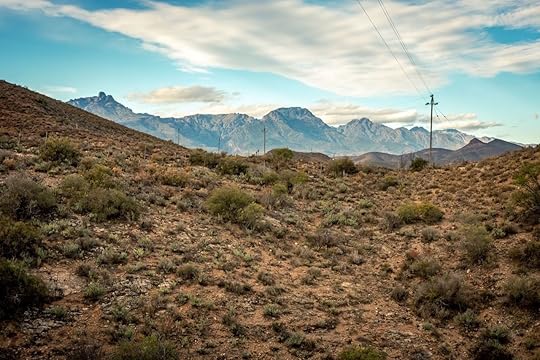
Photo: Andrew Thompson
Above the converted barn are small hills, many of which appear to have seen little human or livestock traffic for decades. Sagging barbed wire fences demarcate old farms, and electrical pylons and a few rusted cans are the only signs of modern life. When you reach the summit of the larger hills, you can spot the small enclaves of houses and farmsteads set beneath the towering Klein Swartberg mountains.

Photo: Andrew Thompson
During my stay, a pair of horses picked through short grass in a field on the outskirts of Ladismith in the morning sunlight. In the background sits Towerkop, a famous 7,000-foot peak that’s one of the highest in the Klein Swartberg range. Local folklore (of questionable origin) suggests that the slit was made by a witch who either flew into or struck the peak in anger. For keen hikers, it represents an accessible full-day challenge from the town.
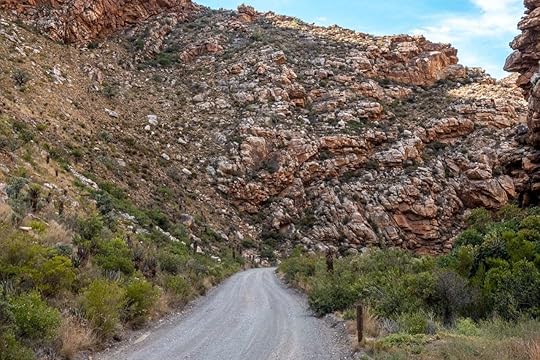
Photo: Andrew Thompson
North of Ladismith is one of South Africa’s most remarkable gravel roads: Seweweekspoort, which means Seven Weeks Gateway. The geology along its 11 miles is the principal draw. It rises up and folds back down in otherworldly strata that’s influenced by volcanic eruptions from millions of years ago.
Although there appears to be no consensus on the origin of its name, this only adds to its intrigue. The best, albeit most unlikely, story is that the name is derived from the possibility that it took brandy smugglers seven weeks to get between the towns of Beaufort West and Ladismith via this route before the road was built.
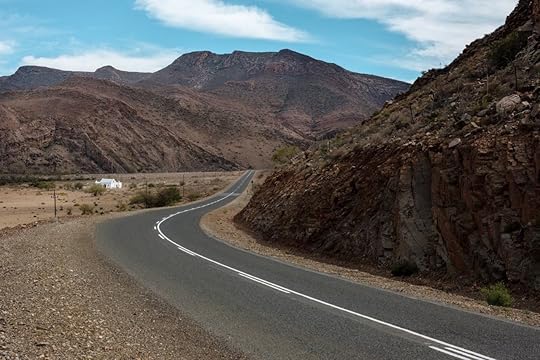
Photo: Andrew Thompson
Somewhere on the other side of the mountain, the gravel turned to tar. I stopped to make my morning coffee at a dilapidated roadside picnic table with an unoccupied home and hostile surroundings as my backdrop.
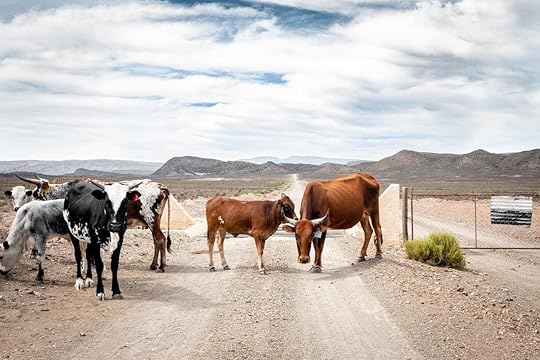
Photo: andrewthompsonsa
A herd of cattle blocked the road as I attempted to make my way between Ladismith and Barrydale, my next stopover point on my road trip.
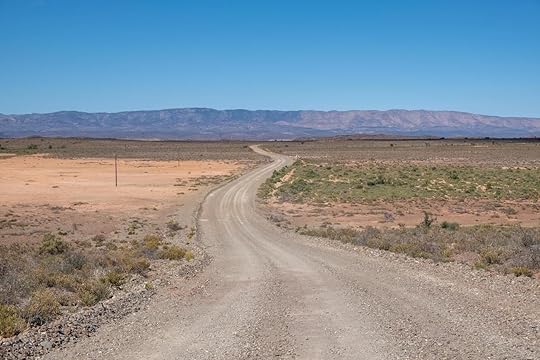
Photo: Andrew Thompson
Long, winding gravel roads like these are common in the Karoo. During the course of the day, I didn’t pass a single other vehicle driving on these roads, and conveniences like cell phone signal and filling stations are non-existent. It was shortly after taking this photo that my vehicle hit the ill-fated rock that left me waiting out the hottest hours of the day for a tow truck.
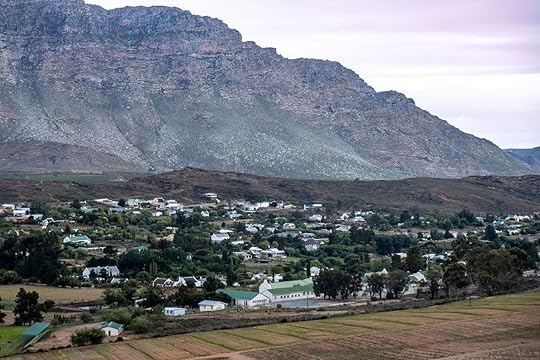
Photo: Andrew Thompson
After four hours sitting in my stationary car, a savior arrived in a cloud of dust: a large flatbed tow truck driven by a paunchy man wearing flip-flops and shorts. In a matter of seconds, he latched my car to his truck, activated a winch, and motioned for me to climb into the cab with him. After that, he drove us both to the nearest town of Barrydale.
Barrydale is a fertile haven on the slopes of the Langeberg mountain range, with a creative community and a solitary mechanic who delivered on his promise to repair my car within the day. The town’s ideal location on the touristic Route 62 has paved the way for a few notable restaurants, galleries, attractions, and quirky accommodation options, and although many had temporarily or permanently closed their doors, it was a good destination to whittle away a few more days.
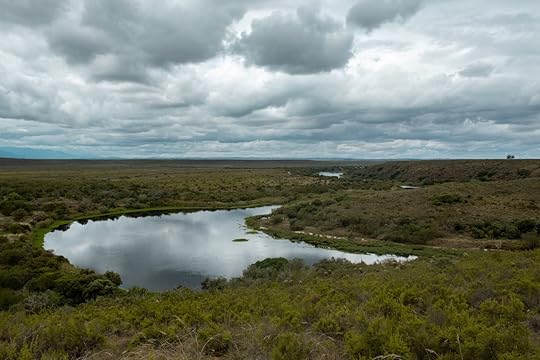
Photo: Andrew Thompson
Continuing south through the Langeberg Mountains toward the town of Swellendam is Bontebok National Park. It’s a lush wilderness fed by the more than 200-mile-long Breeriver, pictured here, which eventually flows into the Indian Ocean in the coastal village of Witsand.
Photo:
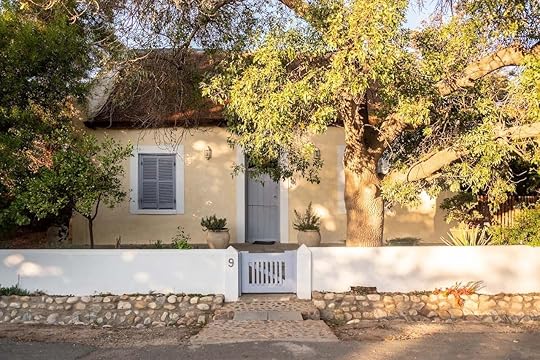
Photo: Andrew Thompson
There are several small hamlets to choose from in this fertile region beneath the Riviersonderend Mountains, but another called McGregor is arguably one of the quirkiest and most charming. Between a burgeoning collection of modern holiday homes used as an escape from nearby Cape Town are charming accommodations like this historical cottage, where I spent three days relishing its tranquillity.
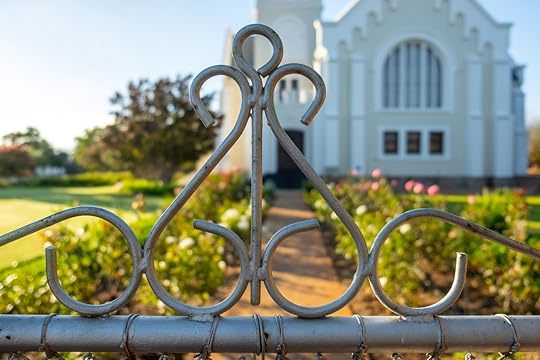
Photo: Andrew Thompson
McGregor has successfully shrugged off its conservative small-town history. In normal times, it’s home to a thriving foodie scene, a poetry festival, and a live music venue that attracts some of the country’s top talent. But the town, which was founded in 1861, like so many in the country, was initially built up around its Dutch Reformed Church — which is still meticulously maintained on the village’s Voortrekker Street.
As tempting as it was to fully integrate into a small town like McGregor, or Barrydale, or return to the barn in Ladismith — all far from the harsh pandemic life in the bigger cities — I eventually felt the calling to return to some semblance of reality. I decided to put my newly repaired car to the ultimate test on the long open roads back to Cape Town, but not without promising to myself that I would return soon to explore more of the country’s hugely underrated Klein Karoo. 
The post A photo tour through South Africa’s incredible Klein Karoo desert appeared first on Matador Network.

France’s most iconic modern art museum is opening an outpost in Jersey City
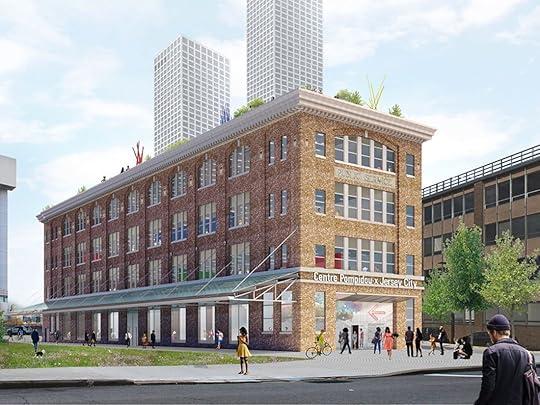
Centre Pompidou, Paris’ famous and highly celebrated modern and contemporary art museum, has chosen Jersey City as the location of its first US outpost.
Jersey City Mayor Steven M. Fulop and the Centre Pompidou joined New Jersey Governor Phil Murphy in the June 4 announcement of the Jersey City x Centre Pompidou Project.
The art institution is set to open in 2024 as a leading international cultural hub located in Journal Square, in the heart of Jersey City. According to the press release, “The center will provide an addition of exclusive exhibitions created with the modern and contemporary art masterpieces from the Paris Centre Pompidou’s collection.”
“This is the latest major step towards our broader revitalization goals, utilizing all our City has to offer and establishing Journal Square as a cultural destination for generations to come,” said Fulop.
The Centre Pompidou will exhibit artworks and will have an educational, hands-on art and cultural experience program, with a community component central to Jersey City’s ambitious and inclusive vision for the future.
The building for the outpost is four stories high and approximately 58,000 square feet. It was acquired in 2017 to create a new art and cultural hub for the city. Architecture firm the Office for Metropolitan Architecture (OMA) will renovate the building for its new purpose.
There are currently three Centre Pompidou satellites throughout the world: one in Málaga, Spain, since 2015; one in Brussels, Belgium, since 2018; and one in Shanghai, China, since 2019. The Jersey City Centre Pompidou will be the first of such outposts in North America. 
The post France’s most iconic modern art museum is opening an outpost in Jersey City appeared first on Matador Network.

Hawaii will remove all travel restrictions once most residents are vaccinated

During the COVID-19 pandemic, Hawaii has had some of the most stringent rules for domestic travel, making testing and quarantine mandatory for many. But on Friday, June 4, 2021, Governor David Ige announced his plan to relax many of the COVID-19 travel restrictions. It all depends on vaccination rates and variants.
When the state reaches a 60 percent full vaccination rate, domestic travelers from the rest of the US who are fully vaccinated will be able to bypass the testing and quarantine requirements. Currently, all travelers must take a COVID-19 test 72 hours before arrival according to the state’s Safe Travels program. When the state achieves a 70 percent vaccination rate, the Safe Travels program will disappear entirely and all travel restrictions to Hawaii will be lifted.
At the time of writing, Hawaii’s vaccination rate is significantly higher than the rest of the US as a whole. Sixty percent of the population has received at least one dose of the vaccine, and 53 percent are fully vaccinated, according to Hawaii’s Department of Health. Comparatively, 51.6 percent of the US population has been vaccinated, and only 42.1 percent has been fully vaccinated, according to the Centers for Disease Control and Prevention.
“The easing of travel restrictions is a direct result of our robust vaccination rate and a community that sacrificed and did what it had to do over the past year and a half to stop the spread of COVID-19. We need to push hard now so we can get to the point where Safe Travels is no longer needed to keep the people of Hawai‘i safe,” said Ige. 
The post Hawaii will remove all travel restrictions once most residents are vaccinated appeared first on Matador Network.

8 spots in Seattle Southside
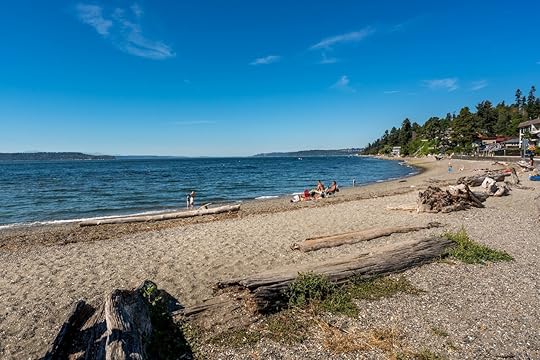 We all have different feelings about traveling right now. When you’re ready, we hope you feel safe, inspired, and excited to explore Seattle Southside.
We all have different feelings about traveling right now. When you’re ready, we hope you feel safe, inspired, and excited to explore Seattle Southside.Here’s a local’s secret for you: Believe it or not, some of the Seattle area’s best offerings can be experienced without stepping foot downtown. In Seattle Southside — anchored by the three small cities of SeaTac, Des Moines, and Tukwila — you can kayak with seals, feast on some of the Emerald City’s best food, and explore a few of the region’s most extraordinary parks, museums, and cultural touchstones. Bonus: It’s all within a short drive of the airport.
To jumpstart your trip planning, below you’ll find an admittedly incomplete list of the incredible spots that await you in Seattle’s backyard. (You’ll just have to visit in person to find the rest on your own.)
Note: Some of the businesses and sites listed below may not currently be operating as described due to safety guidelines. Please contact all locations prior to visiting.
Spot #1: Redondo Beach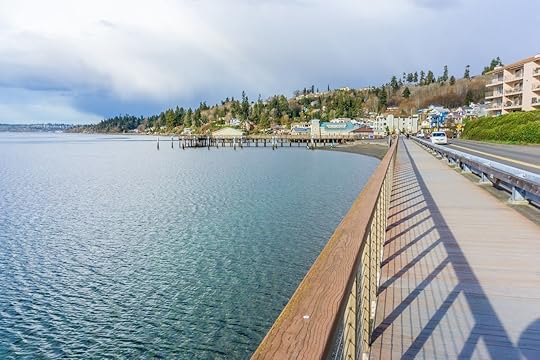
Photo: George Cole Photo/Shutterstock
If the world were a more perfect place, every person who touches down in Seattle would be taken immediately to stroll the mile-long boardwalk on Redondo Beach. It’s surrounded by the wildest of wildlife, like whales, seals, bald eagles, and blue herons flying over Puget Sound. (The people-watching isn’t bad, either.)
If you want to be in the thick of things, rent a kayak or SUP from the Olympic Outdoor Center and get right on the water. Nearby you’ll also find the MaST Center Aquarium, which — hot tip — is free to check out during its public hours on Thursday evenings and Saturdays.
A great day here, SUP or stroll, usually ends with a meal at Salty’s at Redondo Beach, where the only things more beautiful than the mound of fresh seafood on your plate are the mounds above your plate — namely, Maury Island and the Olympic Mountains.
Spot #2: Seattle Chocolate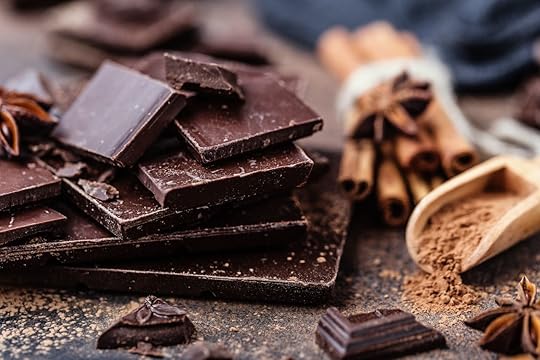
Photo: Ala Shauratskaya/Shutterstock
There’s no sweeter way to experience Seattle Southside than with a tour of Seattle Chocolate. But it isn’t just about the sugar kick: This woman-owned chocolate company has been crafting quality confections in the Pacific Northwest for 30 years. During the tour, you’ll learn about the history of chocolate-making and the importance of ethical sourcing, an ideal the company holds to fiercely.
You’ll also tour the factory, watching the machines at work (no Lucies and Ethels at the conveyor belt anymore) and, of course, indulge in plenty of delicious samples. These whimsically wrapped chocolate bars are iconic in Seattle, so be sure to take home a few for your friends.
Spot #3: The Museum of Flight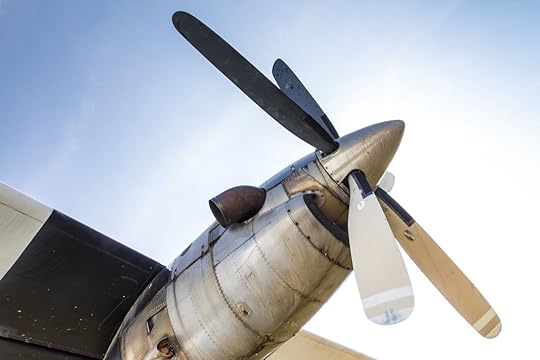
Photo: kawephoto/Shutterstock
The Museum of Flight is the largest privately held aviation and space museum in the world. It’s home to over 175 aircraft and spacecraft alongside tens of thousands of artifacts, spread across a 15-acre indoor/outdoor campus. In other words, give this one a solid afternoon on your calendar.
Of the massive list of exhibits and attractions, you should definitely climb aboard JFK’s Air Force One, geek out over the Apollo exhibit, and get the kids exploring the hands-on activities in the Kid’s Flight Zone. But as impressive as the displays are, what really makes the museum unforgettable are the stories about the groundbreakers and innovators who left their mark on the world through aviation, science, and space travel.
Spot #4: Highline Seatac Botanical Garden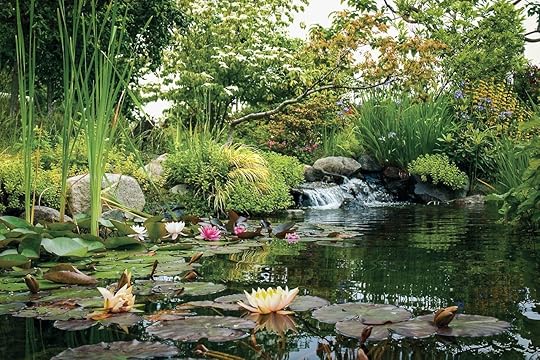
Photo: Seattle Southside
At Highline Seatac Botanical Garden, the history of Seattle is told through heritage gardens, native plants, and a captivating array of colorful blooms. You can also expect waterfalls, forest views, and plenty of meditative walking trails and spaces.
Most movingly, the lush Seike Japanese Garden is a tribute to a local Japanese-American family who was sent to a Japanese internment camp during World War II. Despite this injustice, three sons served in the US military, and the middle son, Tol, was tragically killed in action. His life is memorialized in this serene pond and mountain-style garden. The Highline Seatac Botanical Gardens are free to the public every day of the year.
Spot #5: Spice Bridge International Food Hall at Tukwila Village
Photo: Denise Miller for Global to Local/Spice Bridge
The Spice Bridge International Food Hall opened in late 2020 as one of the most exciting additions to the Seattle area food scene in recent memory. Each vendor is part of Food Innovation Network’s Business Incubator Program, which helps women of color and immigrants found businesses. Judging by the exhilarating aromas swirling around inside the hall, the project has been a massive success.
Arrive hungry — and maybe with a bag for takeout — so you can eat your way around the globe, sampling everything from Argentinian pastafrola to Cambodian stuffed chicken wings to Congolese beignets to organic Afghani pulled lamb sliders. Come curious, too.
Spot #6: Foster Golf Links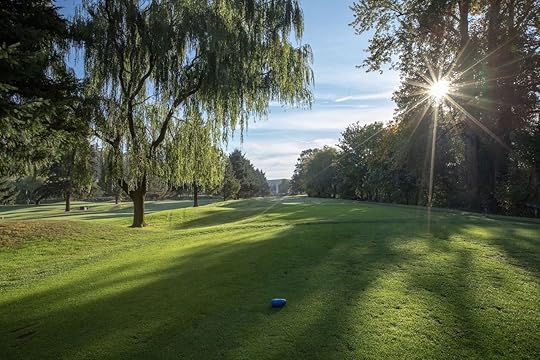
Photo: Craig Zellerhoff / Foster Golf Links
If you hold to the opinion that vacation is spelled G-O-L-F, bookmark a day to tee off at Foster Golf Links. This public golf course, hugged and intersected by the gentle curves of the Duwamish River, was founded way back in 1925 — it’s something of a Seattle classic. The 18-hole course is mostly flat and easy to walk without a golf cart, but it’s still a challenge for your average Tiger or Phil.
Afterward, be sure to grab a bite to eat and a cold beer on the patio of Billy Baroo’s Bar & Grill, views of the rolling greens and river everywhere you look.
Spot #7: Robert Morris Earthwork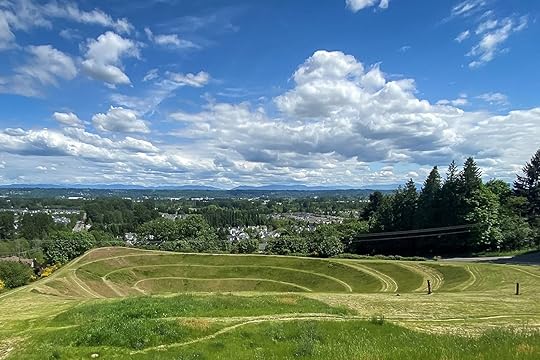
Photo: Seattle Southside
If Mother Nature ever masqueraded as a human artist, she’d probably create something along the lines of the Robert Morris Earthwork. In 1979, 4Culture — then known as the King County Arts Commission — commissioned artist Robert Morris to produce a larger-than-life sculpture using nothing but land as his canvas. Inspired by ancient Peruvian amphitheaters, Morris cleared the undergrowth from an abandoned gravel pit, sculpted and terraced the earth, and planted the undulating slopes with rye grass.
Akin to ancient ruins, what remains is a breathtaking work of art that looks like it’s been there for thousands of years. Perhaps the best part? The Robert Morris Earthwork is open year-round and free to the public.
Spot #8: Copperleaf Restaurant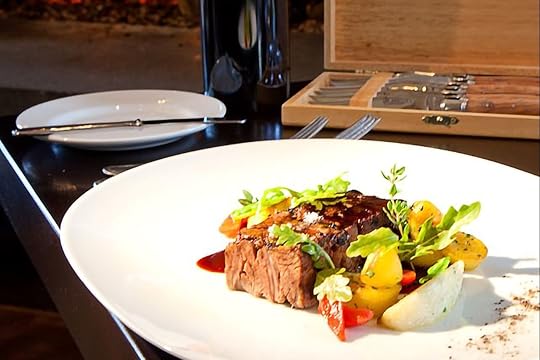
Photo: Seattle Southside
As you make your way to the Copperleaf Restaurant, you’d be forgiven for wondering if you’ve taken a wrong turn. Located in the heart of the Cedarbrook Lodge, the lush green setting absolutely belies its proximity to the airport. It’s a total urban oasis.
If you’ve ever wondered what Seattle tastes like, Copperleaf Restaurant is the place to find out. Its menu focuses on locally sourced and foraged fare from some of the region’s best farmers, fisherpeople, and artisans, and the restaurant frequently holds events dedicated to local specialties from truffles to tomatoes. It’s arguably the best place to savor your last bites of Seattle Southside before boarding your flight. 
The post 8 spots to discover in Seattle Southside appeared first on Matador Network.

Matador Network's Blog
- Matador Network's profile
- 6 followers



